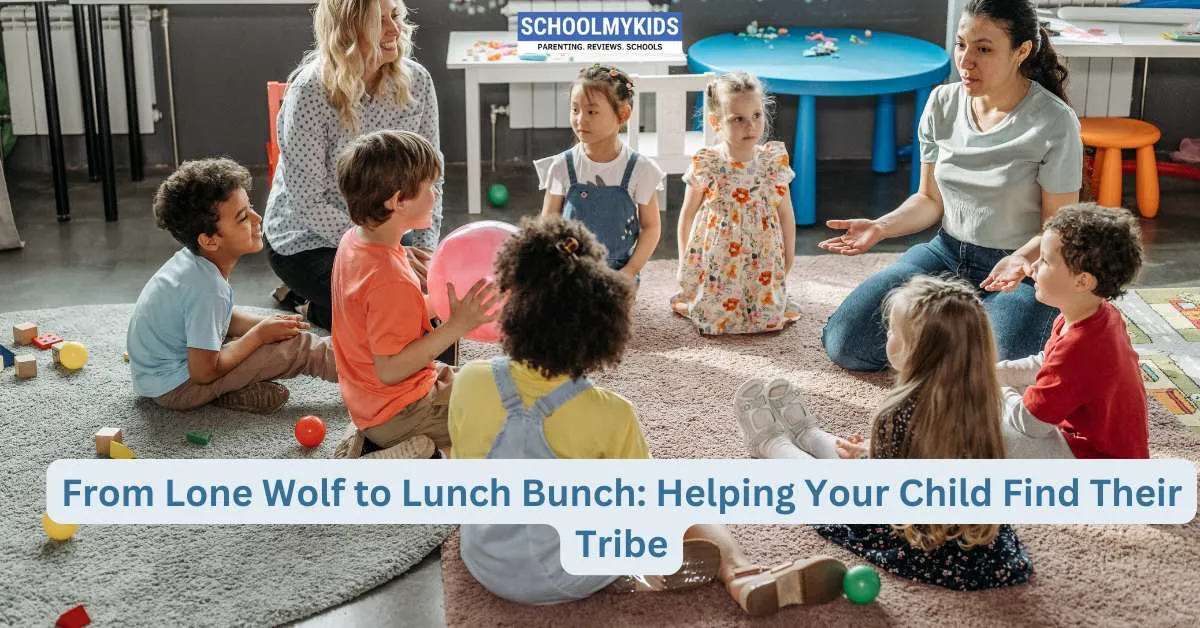Finding the right social circle can feel like a daunting challenge for many children. The transition from feeling like a lone wolf to joining the "lunch bunch" is more than just a matter of popularity—it’s about building healthy, supportive relationships that contribute to overall well-being. In this article, we’ll explore the dynamics of childhood friendships, the common challenges children face, and offer practical strategies to help your child discover their tribe.
Understanding Social Dynamics in Childhood
Children’s social lives evolve as they grow, and friendships play a pivotal role in emotional and social development. Research in developmental psychology shows that early social interactions set the stage for future interpersonal skills, resilience, and even academic success.
The Importance of Friendships
Friendships provide children with:
- Emotional Support: Positive interactions help children develop empathy and learn to navigate complex feelings.
- Self-Confidence: Forming and maintaining friendships boosts self-esteem and encourages independent problem-solving.
- Social Skills: Regular interaction with peers teaches vital skills such as cooperation, negotiation, and conflict resolution.
Studies have shown that children with strong social bonds tend to perform better academically and exhibit fewer behavioral problems. The nurturing environment provided by genuine friendships can serve as a protective factor against stress and anxiety.
Common Challenges Faced by Children
Despite the benefits, many children struggle to make friends due to various factors:
- Social Anxiety: A fear of rejection or embarrassment can make initiating interactions daunting.
- Different Interests: Children who have niche interests may find it challenging to connect with peers who share their passions.
- Bullying or Exclusion: Negative experiences at school can leave lasting impacts on a child’s willingness to engage with others.
- Shyness or Introversion: Some children naturally take longer to warm up to new people, requiring gentle encouragement to step out of their comfort zones.
Understanding these challenges is the first step in guiding your child toward successful social interactions.
Strategies to Help Your Child Find Their Tribe
Parents and caregivers play a critical role in smoothing the path toward new friendships. Here are some research-backed strategies to consider:
Building Confidence and Social Skills
Confidence is the cornerstone of successful social interactions. To help your child build self-assurance:
- Encourage Positive Self-Talk: Teach your child to replace negative thoughts with affirmations. Simple phrases like, “I am interesting,” or “I have great ideas to share,” can be powerful.
- Role-Playing: Practice common social scenarios at home. Role-playing can help your child navigate greetings, joining group activities, and handling minor conflicts.
- Celebrate Small Wins: Whether it’s sharing a toy or engaging in a conversation, acknowledging every positive social interaction reinforces good behavior.
Enhancing Communication and Empathy
Effective communication and empathy are essential for forming meaningful friendships:
- Active Listening: Encourage your child to listen carefully to others. Ask them to summarize what their friend said, reinforcing that they value and understand the conversation.
- Sharing Emotions: Help your child articulate their feelings in words. When children learn to express themselves, they become better at understanding and responding to the emotions of others.
- Empathy Exercises: Simple activities, like reading stories together and discussing the characters’ feelings, can enhance your child’s ability to empathize with peers.
Creating Opportunities for Interaction
Providing the right environment for social interaction is vital:
- Extracurricular Activities: Encourage participation in clubs, sports, or art classes that align with your child’s interests. Shared activities naturally foster connections.
- Playdates and Group Outings: Organize small gatherings with classmates or neighborhood friends. These controlled environments allow your child to practice social skills without the overwhelming pressure of a large group.
- School Involvement: Work with teachers to identify children with similar interests. Many educators can facilitate group projects or lunchtime clubs that help bridge social gaps.
Practical Steps to Cultivate Friendships at School
While home-based strategies are important, navigating the school environment is equally crucial.
Navigating the New School Environment
For children new to a school or experiencing changes, the school environment can be intimidating:
- Orientation and Buddy Programs: Many schools offer orientation sessions or buddy systems to help new students acclimate. Ensure your child takes full advantage of these resources.
- Open Communication: Maintain an ongoing dialogue about your child’s school experiences. Regular check-ins can help you identify any emerging issues early on.
- Peer Mentorship: Encourage relationships with older students or class leaders who can provide guidance and support.
The Role of Teachers and School Activities
Educators can be pivotal in creating an inclusive atmosphere:
- Facilitated Group Work: Teachers can design projects that require collaboration, ensuring every student has an opportunity to contribute.
- Inclusive Activities: Schools that celebrate diversity and encourage inclusivity help all children feel valued. Advocate for programs that promote social-emotional learning.
- Teacher Feedback: Request periodic feedback from teachers regarding your child’s social interactions. This insight can be invaluable in tailoring your approach at home.
Fostering Inclusivity
It’s important to create an environment where every child feels welcomed:
- Encourage Diverse Friendships: Help your child understand the value of diverse perspectives. Friendships across different backgrounds enrich social experiences.
- Model Inclusivity: Children learn by example. Show them through your actions how to be inclusive and respectful of differences.
- Address Bullying: Stay vigilant about bullying. If you notice signs of exclusion or negative behavior, address them promptly with school officials.
When Professional Help Might Be Needed
Sometimes, even with the best strategies, children may struggle significantly:
Recognizing When to Seek Help
If your child shows persistent signs of social withdrawal, anxiety, or depression, it may be time to consult a professional:
- Behavioral Changes: Noticeable shifts in behavior, such as avoiding school or social settings, can be red flags.
- Academic Decline: A drop in school performance might be linked to underlying social issues.
- Emotional Distress: If your child expresses overwhelming sadness or fear about interacting with peers, professional guidance could be beneficial.
Working with Counselors
School counselors or child psychologists can offer specialized strategies tailored to your child’s needs:
- Individual Therapy: One-on-one sessions can help your child work through social anxiety or other issues in a safe environment.
- Group Therapy: In some cases, group sessions with peers facing similar challenges can foster a sense of community and mutual support.
- Parent Guidance: Professionals can also provide tips and strategies for you to better support your child at home.
Conclusion: Embracing the Journey from Lone Wolf to Lunch Bunch
Helping your child find their tribe is a gradual process that requires patience, understanding, and proactive engagement. By building your child’s confidence, teaching effective communication skills, and creating opportunities for interaction, you can significantly ease their transition from feeling isolated to being part of a vibrant social group. Remember, every child’s journey is unique—what works for one may not work for another. Celebrate the small victories along the way and maintain open communication with your child as they navigate the complexities of social life.








Be the first one to comment on this story.